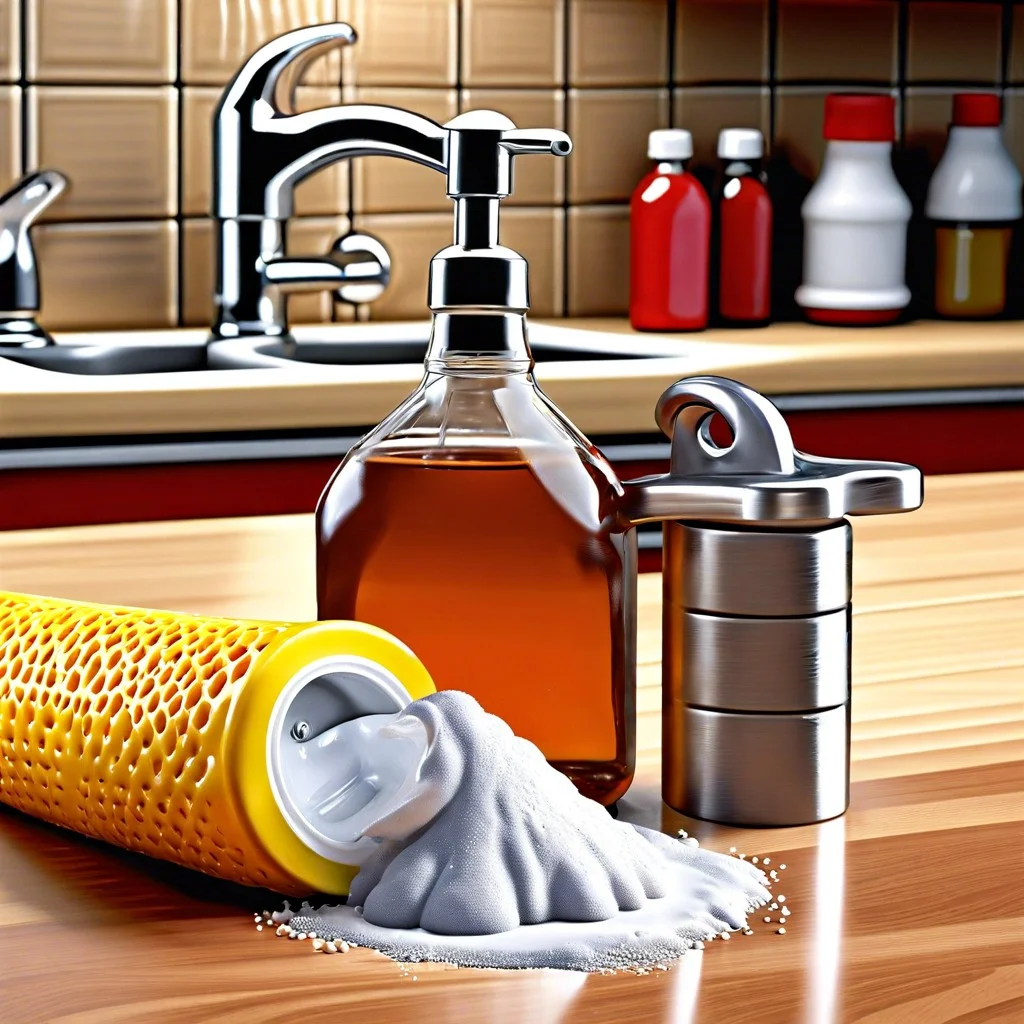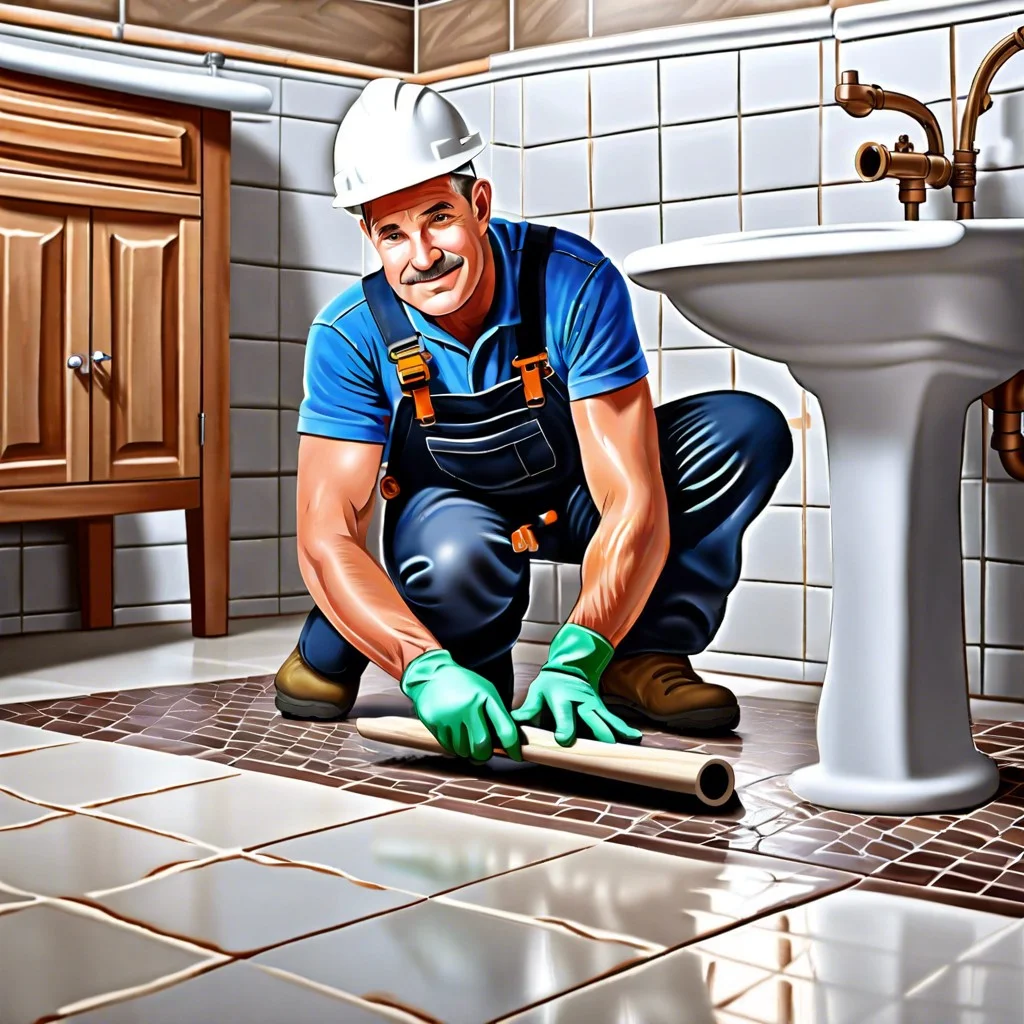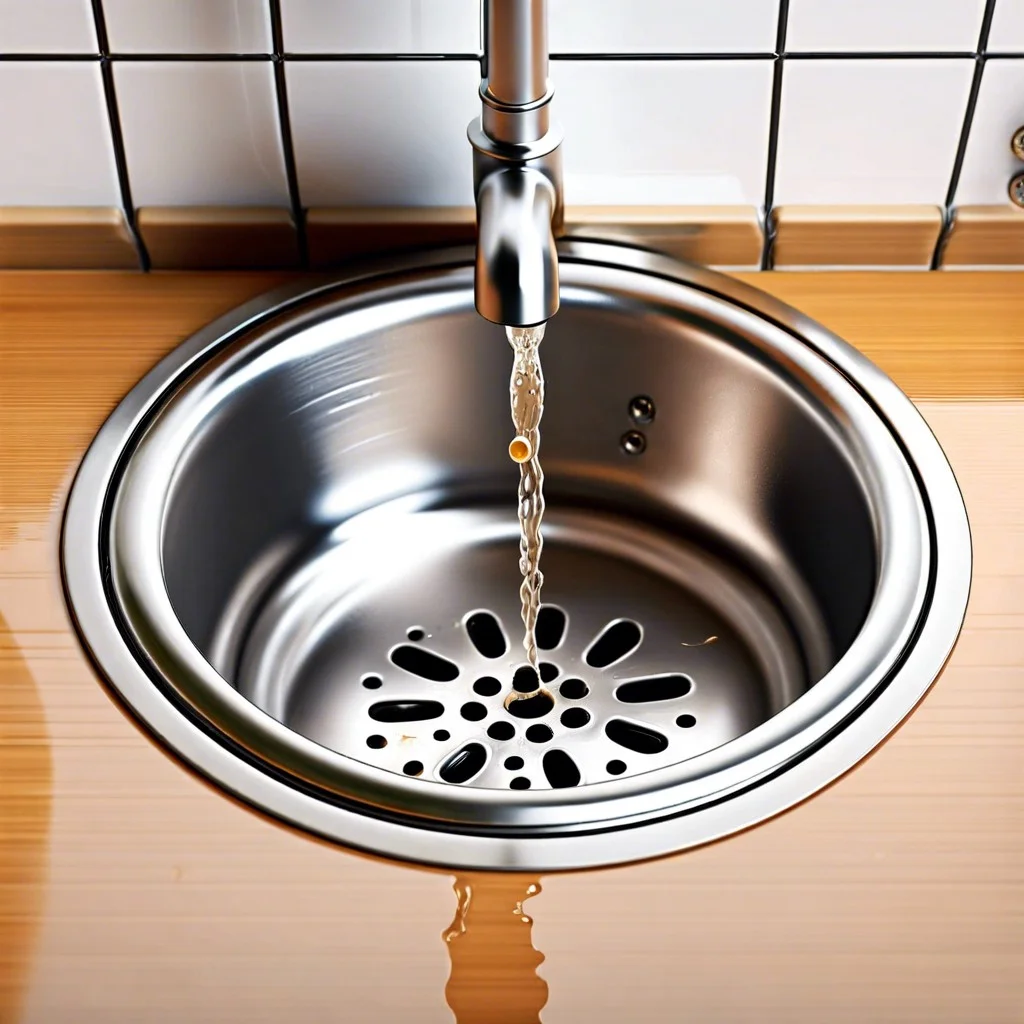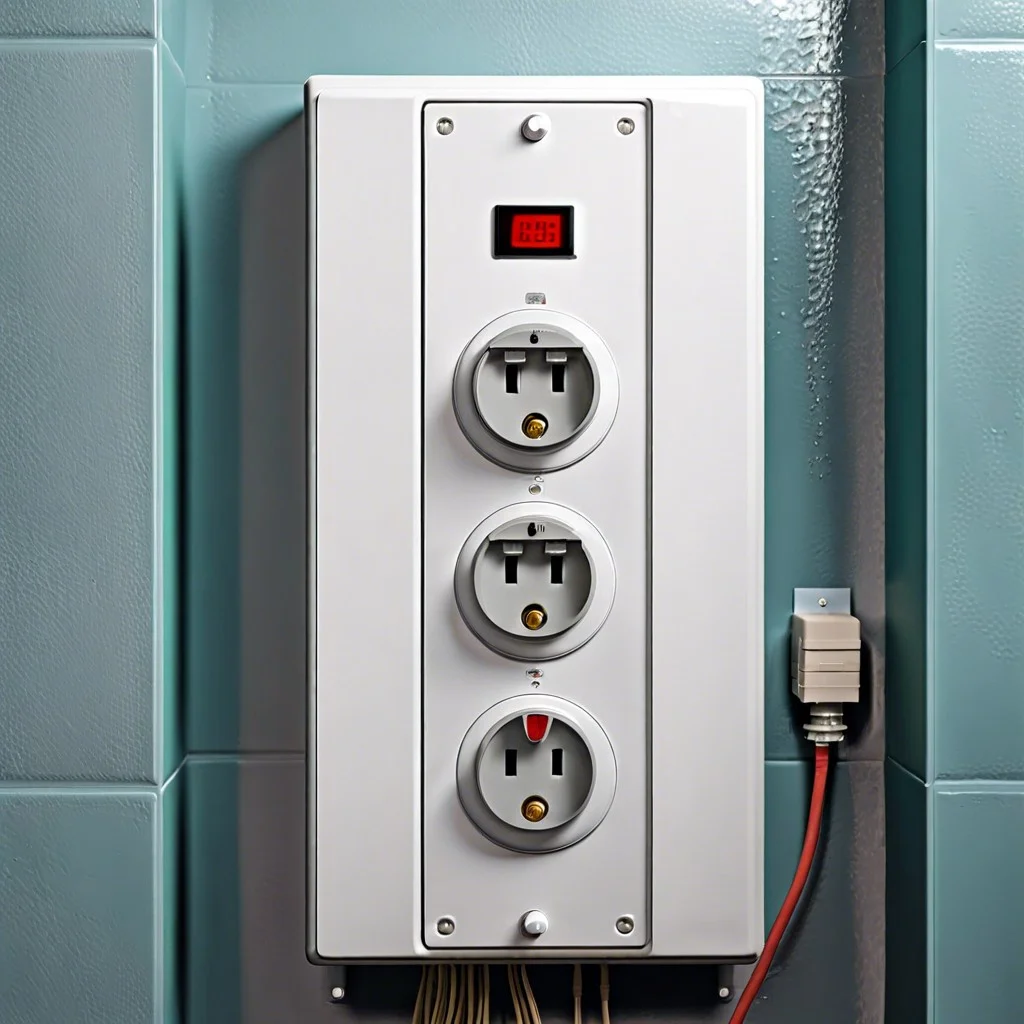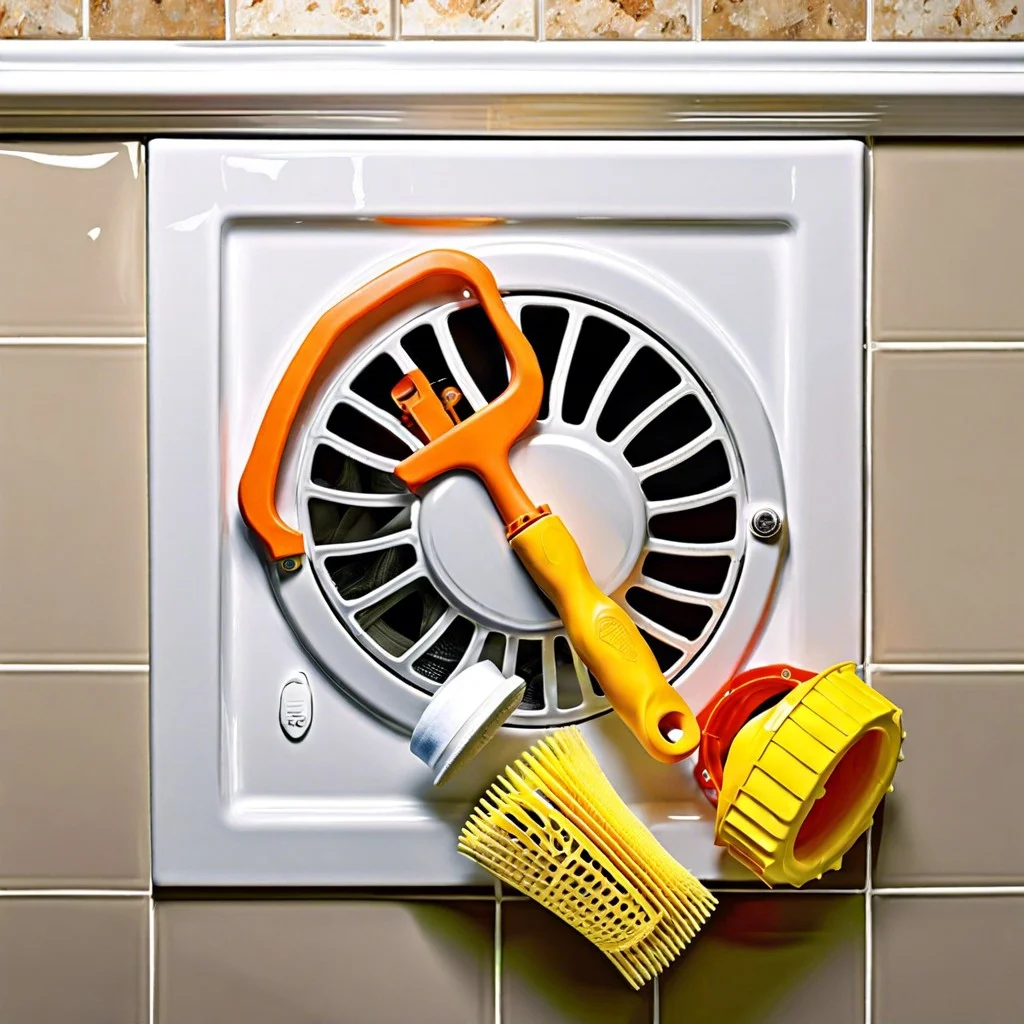Last updated on
Unblocking a congested drain filled with hair might seem daunting, but this article equips you with effective methods to troubleshoot this pesky problem by yourself.
Key takeaways:
- Use Baking Soda & Vinegar Before Plunging (eco-friendly approach)
- Remove Hair with Tweezers (be patient, avoid aggressive tugging)
- Utilize a Drain Snaking Tool (follow the steps carefully)
- Install a Hair Catcher (minimal maintenance, substantial impact)
- Engage Professional Assistance (recognize signs of deeper issues)
Use Baking Soda & Vinegar Prior to Plunging
Mix equal parts of baking soda and vinegar and pour the combination directly into the clogged drain. The fizzing chemical reaction that ensues can help dislodge hair and grime buildup.
Allow the solution to work its magic for an hour before flushing with hot water, which further aids in clearing the debris loosened by the mixture. This natural remedy often softens the clog, making the subsequent use of a plunger more effective and less labor-intensive.
It’s an eco-friendly approach that can prevent the need for harsher chemicals or excessive plunging that could potentially damage your pipes.
Remove With Tweezers
Diving in with tweezers can be a straightforward fix to a hairy problem. To effectively leverage this tool for drain hair extraction, ensure the power is off in a bathroom environment to prevent electric shock near water.
Expand the metal arms to clasp strands of hair peeping out from the drain. A gentle twist and pull may coax out surprisingly long clumps adhering to the tweezers’ grip.
In cases of stubbornly entangled hair, alternating between poking to loosen and grasping to extract can achieve better results. Remember, patience is key – avoid aggressive tugging that could damage pipes.
For those with sensitive noses, a mask may help as odors can arise during removal. Always dispose of the hair responsibly to prevent it from finding another drain to clog.
Utilize a Drain Snaking Tool
A drain snake, sometimes also known as a plumber’s snake, reaches down into the pipes to physically dislodge trapped hair clogs that basic plunging might not affect. Here’s how it works:
1. Insertion: Gently feed the coil into the drain, twist it slightly to navigate through bends.
2. Operation: Crank the handle, which spins the head, latching onto blockages.
3. Extraction: Pull the tool out carefully, bringing the hair with it.
4. Clean Repeat: Remove the tangled hair from the tool, clean it and, if necessary, repeat the process.
It’s a hands-on solution that can save a call to the plumber. Remember, too much force can damage pipes, so proceed with caution.
Installation of Hair Catcher
Equipping your drain with a hair catcher is akin to enlisting a diligent guard; it steadfastly prevents hair from embarking on its journey down the drain. Opting for a small metal or silicone hair catcher, tailored to your drain size, allows for a seamless integration into your daily routine. Affordability aligns with its simplicity, with no need for tools during installation—simply place it over or inside the drain.
Maintenance is minimal; a quick cleanse once a week discards collected debris. Its presence may go unnoticed, but its impact on reducing clogs is substantial. Embracing the hair catcher as a fixture in every shower and bathtub not only safeguards your pipes but also saves you from future plumbing woes.
When to Engage Professional Assistance
There comes a point where home remedies and manual removal fail in the fight against a clogged drain. Recognizing when to call in professional help is key to preventing further damage. If multiple attempts to clear the blockage have been unsuccessful, it’s time to consider a plumber.
Persistent bad odors, slow draining in multiple fixtures, and gurgling sounds are indicators that the problem could be deeper within your plumbing system. Professional plumbers come equipped with powerful tools and cameras to diagnose issues that are beyond the reach of household solutions. Ignoring these signs can lead to costly repairs later on. It’s crucial to trust the intricacies of your plumbing to experts when your efforts have hit a dead end.
FAQ
What will dissolve hair in a drain?
A mixture of baking soda and vinegar poured down the drain and left to sit for a few hours can effectively dissolve hair clogs.
What unblocks hair in drains?
To unblock hair in drains, a mixture of dish soap, baking soda, and white vinegar can be effectively used.
Does Drano get rid of hair?
Yes, Drano is an effective solution for getting rid of hair clogs as it begins dissolving hair upon contact.
Can homemade remedies effectively remove hair from drains?
While homemade remedies can sometimes alleviate minor hair clogs in drains, they often lack the potency to thoroughly remove substantial blockages, creating the need for professional solutions.
How efficient are drain snakes in dislodging hair clogs?
Drain snakes are considerably efficient in dislodging hair clogs due to their flexible design and ability to lodge deep into the drain pipe.
Do eco-friendly drain cleaners effectively dissolve hair blockages?
Yes, eco-friendly drain cleaners can effectively dissolve hair blockages, but their effectiveness may vary depending on the severity of the blockage and the specific product used.
Recap
